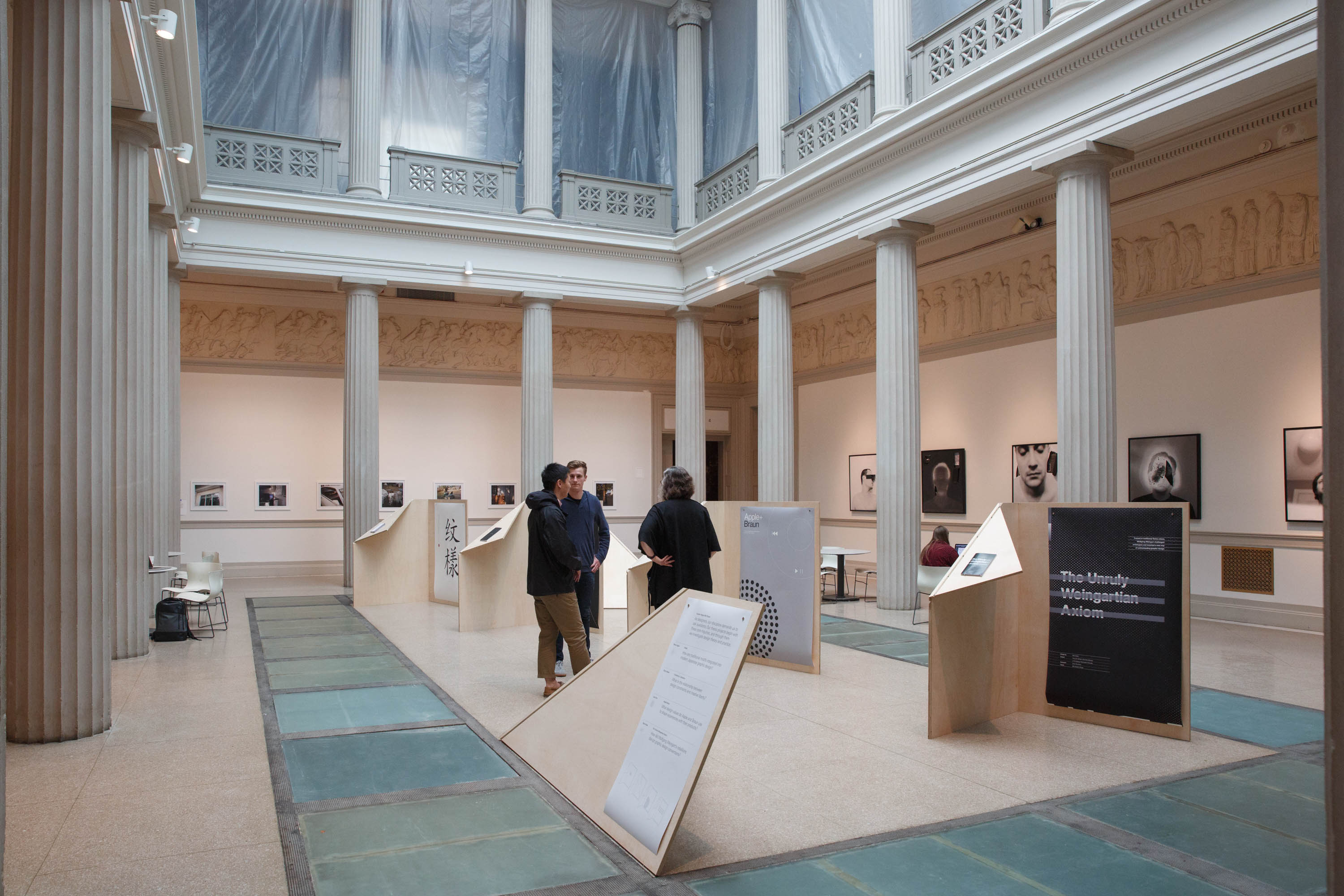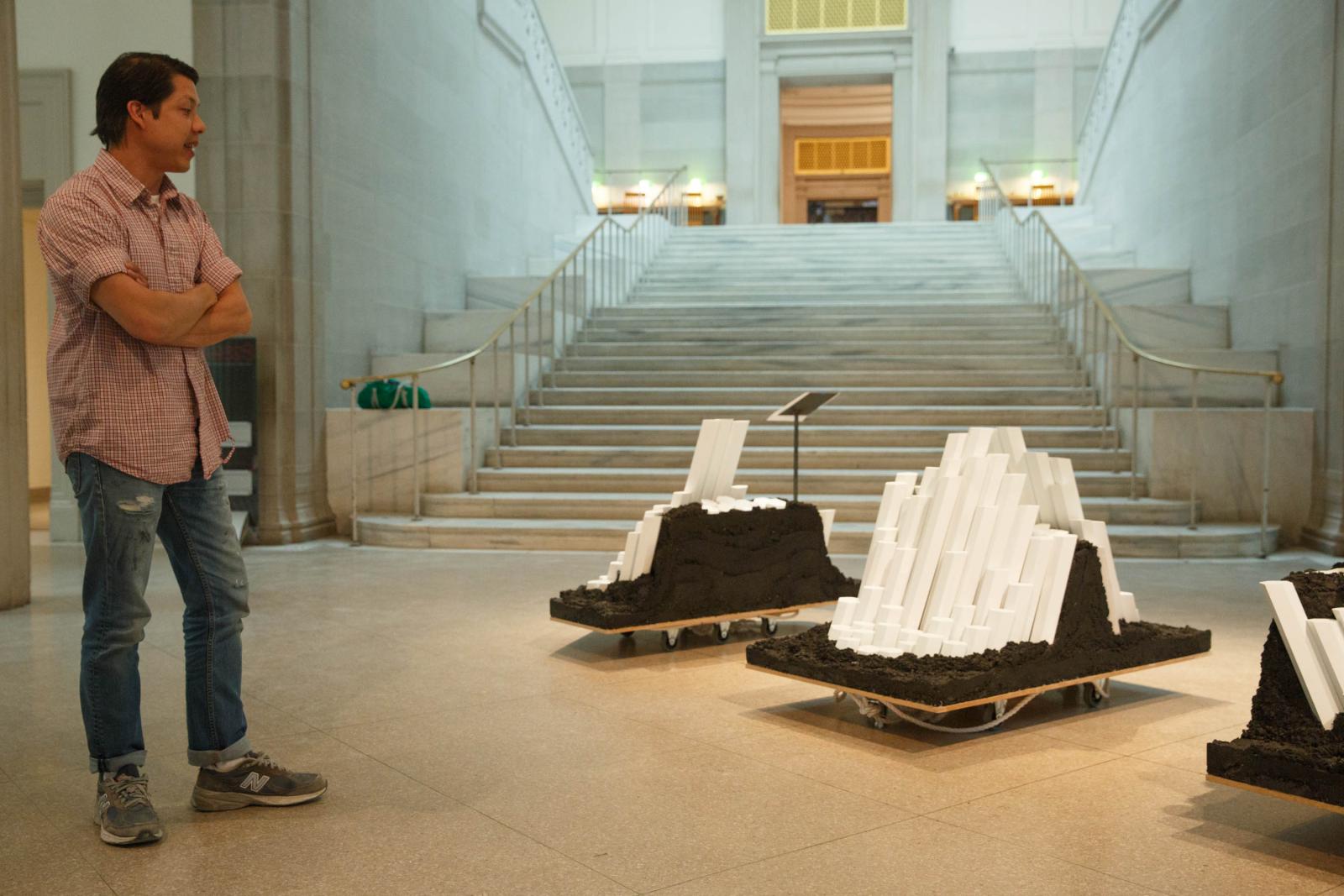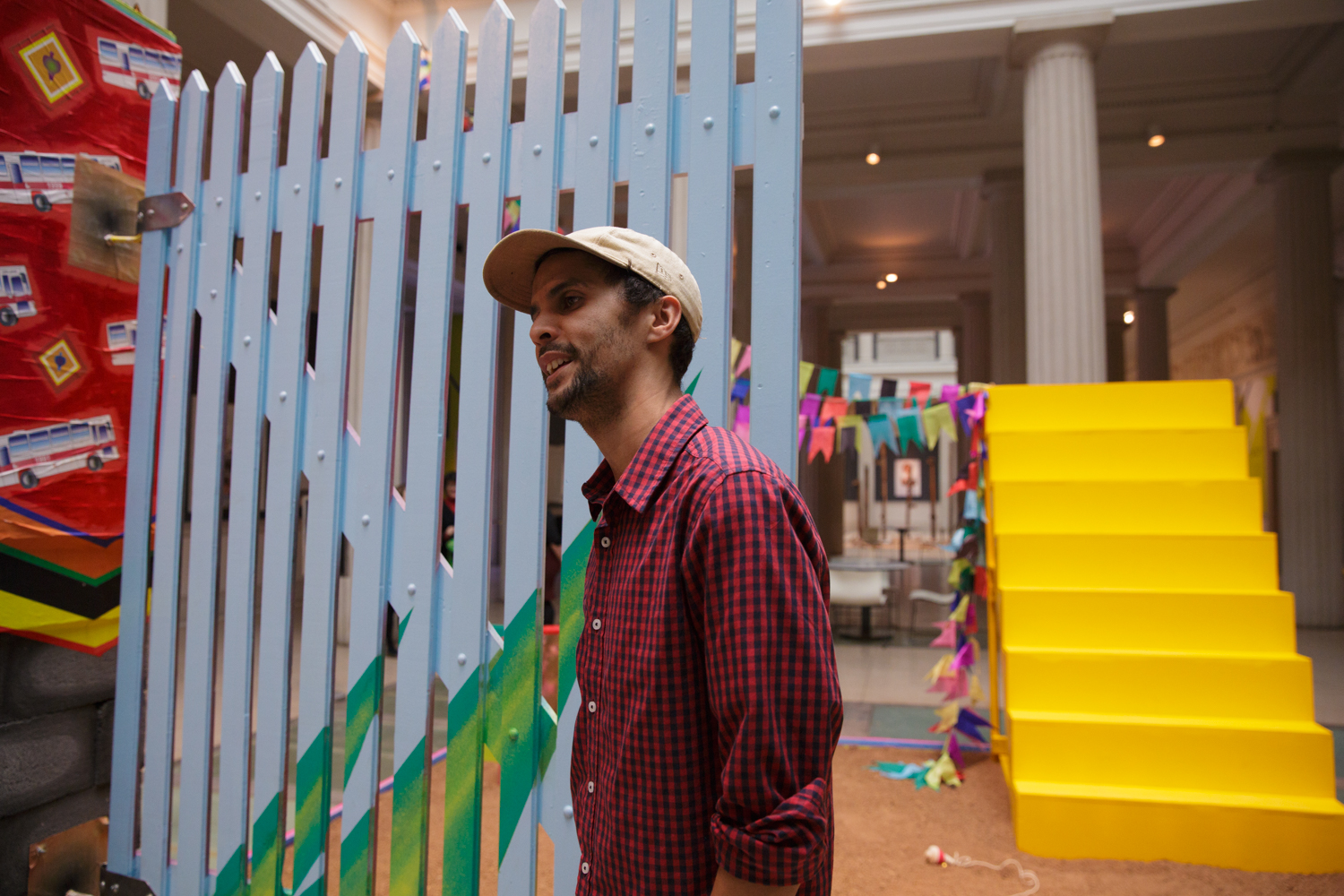By Willona M. Sloan
Two people struggle fruitlessly, hunched over, pushing into one another, twisting, writhing in conjoined black hoods that obscure their faces. Their bodies blur into one misshapen, two-headed form. Despite their desperate efforts, they remain bound together.
This haunting and compelling visual story is part of “Object of Neglect,” a mixed media work of film and photography by Khadijah Wilson, an undergraduate fine arts major. Ms. Wilson sewed two hoodies together face-to-face, which serves to conceal her subjects’ bodies, genders and identities.
“I’m working with the notion that in order to create a racialized body you have to forcefully group people together and fit them into an overly determined category of ‘blackness,’” Ms. Wilson said. “I was interested in this idea that in order to do that you’re covering up individual identities at the same time.”
Ms. Wilson’s compelling work is featured in “NEXT,” a new exhibition at the George Washington University’s Corcoran School of the Arts and Design. Showcasing the work of more than 50 graduating undergraduate and graduate students, the annual thesis exhibition is a highly anticipated art event in the city.
“The work represents what is in the core DNA of the Corcoran, which is the desire to see a world that’s different than the current world that we live in and a desire to address critical issues, whether they are issues around disabilities, trauma, phobias, political events that we see around us, or the state of race relations in this country,” said Sanjit Sethi, director of the school. “The Corcoran School of Art and Design continues to be a place that cultivates cultural development and experience through creativity.”
Jack Mead’s “Spectrum” virtual reality game allows you to simulate the experience of walking into an elementary school classroom on your first day at a new school. The game prompts you to introduce yourself and respond to the teacher’s questions. Next, you sit on the floor, converse politely with your neighbor and even choose a partner for an activity.
“These might seem like very simple problems but if you have autism, they can be amplified manyfold,” said Mr. Mead, whose experiences of being the new child in several different schools prompted him to develop the project. “Just being able to go into a classroom, interact with people, introduce yourself to the class, if you could rehearse real-life situations in a safe, controlled environment and then go out into the real world, I think that’s a tremendous amount of power.”
According to his research, Mr. Mead found that current techniques of therapy for dealing with social anxiety in autistic children include practicing familiarity to help children feel comfortable. “I felt that the power of virtual reality to immerse yourself could create very positive lasting effects,” said Mr. Mead, who sees virtual reality as a path to democratizing healthcare by allowing for tailored therapies that could help patients work through troubling phobia scenarios.
“NEXT” includes graphic design, exhibition design, fine art, new media and photojournalism with a strong emphasis on visual storytelling. Wyatt Reid Westlund’s “When Is Home” photojournalism series explores the isolation experienced by asylum seekers who have been forced to flee their homelands because of homophobia, while Victoria Sarno Jordan’s fine art photography series “Tiara” captures the pain, pride and endurance of a local female boxer’s training regime. The documentary project “Anyone Like Me” by Mimi D’Autremont profiles a 25-year-old football coach at Gallaudet University in a work that is both illuminating and inspiring.
Opening reception will be held Wednesday, April 12, from 6-9 p.m. The exhibition will be on view through May 21 at 500 17th Street, NW.








